Bio 40s first quiz
1/29
There's no tags or description
Looks like no tags are added yet.
Name | Mastery | Learn | Test | Matching | Spaced |
|---|
No study sessions yet.
30 Terms

1
Hydrogen Bond
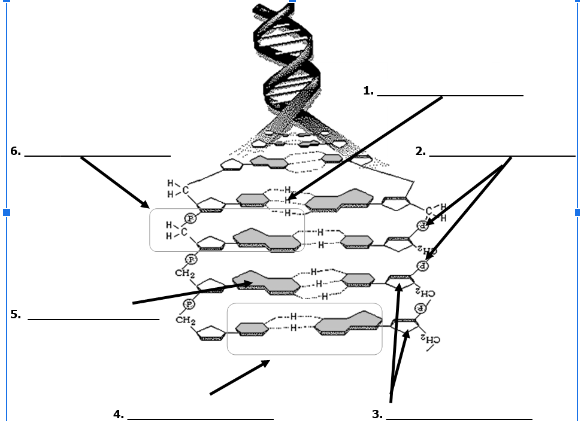
2
Phosphate Group
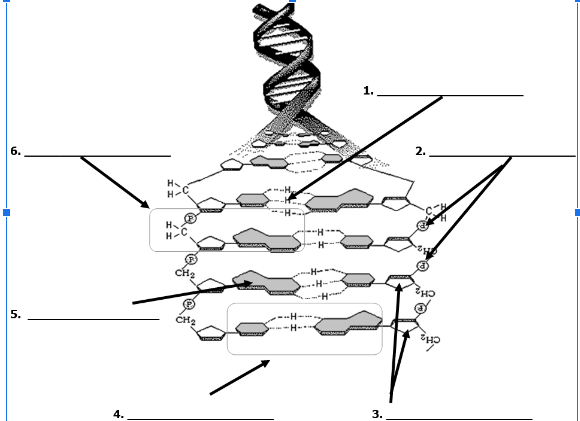
3
Deoxyribose Sugar
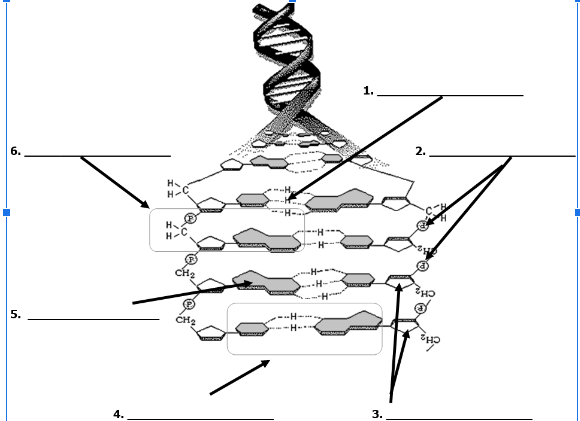
4
Nitrogenous Base Pair

5
Nitrogen Base
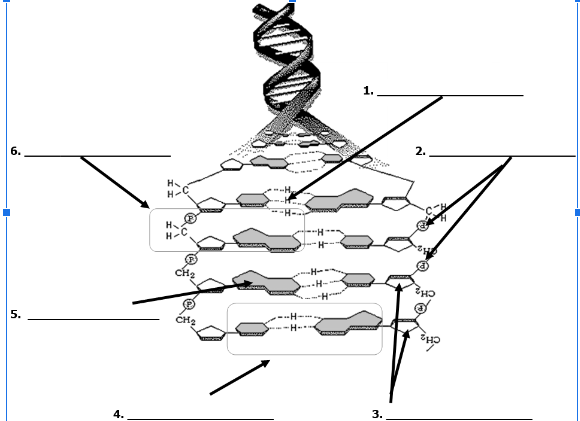
6
Nucleotide
4 nitrogenous bases
Adenine, Guanine, Cytosine, and Thymine
Purines
Adenine and Guanine
Pyrimidine
Cytosine and Thymine
How is the shape of DNA described?
Double Helix (Antiparallel)
How does DNA hold information?
DNA holds information in the sequence of bases.
What type of bond connects the sugar and phosphate groups of the DNA backbone?
Sugar and phosphate group are connected with a covalent bond.
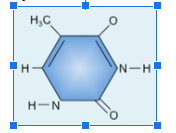
Name each of the following nitrogen bases:
Thymine

Name each of the following nitrogen bases:
Adeine
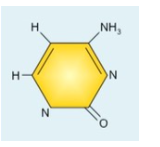
Name each of the following nitrogen bases:
cytosine
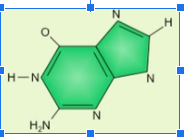
Name each of the following nitrogen bases:
Guanine
Q: Why didn’t Rosalind Franklin receive the Nobel Prize?
A: She had passed away, and the Nobel Prize is not awarded posthumously.
Q: What was Erwin Chargaff's contribution?
Chargaff's rules: the amount of adenine equals thymine, and the amount of guanine equals cytosine.
Q: What did Friedrich Meischer discover, and what did he call it?
A: He discovered DNA in white blood cells from pus and called it "nuclein."
Q: If an organism’s DNA contains 30% adenine, what percentage of thymine, guanine, and cytosine will it have?
A: 30% thymine, 20% guanine, and 20% cytosine.
how many hydrogen bonds in guanine cytosine bond
3
how many hydrogen bonds in aedine thymine bond
2
Who received the Nobel Prize for the Structure of DNA?
James Watson, Francis Crick, and Maurice Wilkins were awarded the Nobel Prize for the structure of DNA.
Phoebus Levene
Discovered that DNA contained adenine, guanine, thymine, cytosine, a deoxyribose sugar, and a phosphate group.
Griffith’s Experiment
Griffith studied bacteria that cause pneumonia in mice. The smooth (S) strain, which had a protective coating, made the mice sick and killed them. The rough (R) strain was harmless. When the S strain was killed by heat, it no longer caused disease. But when he mixed the heat-killed S strain with the live R strain, the mice died, and live S strain bacteria were found in their blood. This showed that something from the dead S strain changed the R strain,
Martha Chase & Alfred Hershey
showed that DNA is the genetic material of the cell.
The Hershey-Chase experiment tested whether DNA or protein is the genetic material. In one experiment, they labeled viral proteins with radioactive sulfur (³⁵S) and found no radioactivity inside bacteria after infection. In another experiment, they labeled viral DNA with radioactive phosphorus (³²P), and radioactivity was found inside the bacteria. This showed that DNA, not proteins, is the genetic material.
Rosalind Franklin
used X-ray crystallography to show shape of DNA and her photo 51 showed that DNA had two strands and that phosphate was on outside and distance between two strands are equal
Maurice Wilkins
also worked on X-ray crystallography but did not work well with franklin
James Watson
Realized that DNA was the key to understanding life and was determined to solve its structure.
shared office with Francis crick and worked togethor
How Watson and Crick figured out the structure of DNA
They had dinner with Edwin Chargaff and somewhat interrogated him on his research.
Watson attended a lecture that Rosalind Franklin gave where she was presenting some of her research
Wilkins showed Watson and Crick Franklin’s images without her consent.
Watson and Crick used her image and other known information about DNA to play with pieces of cardboard cut into the shapes of DNA components and determine the structure of DNA.